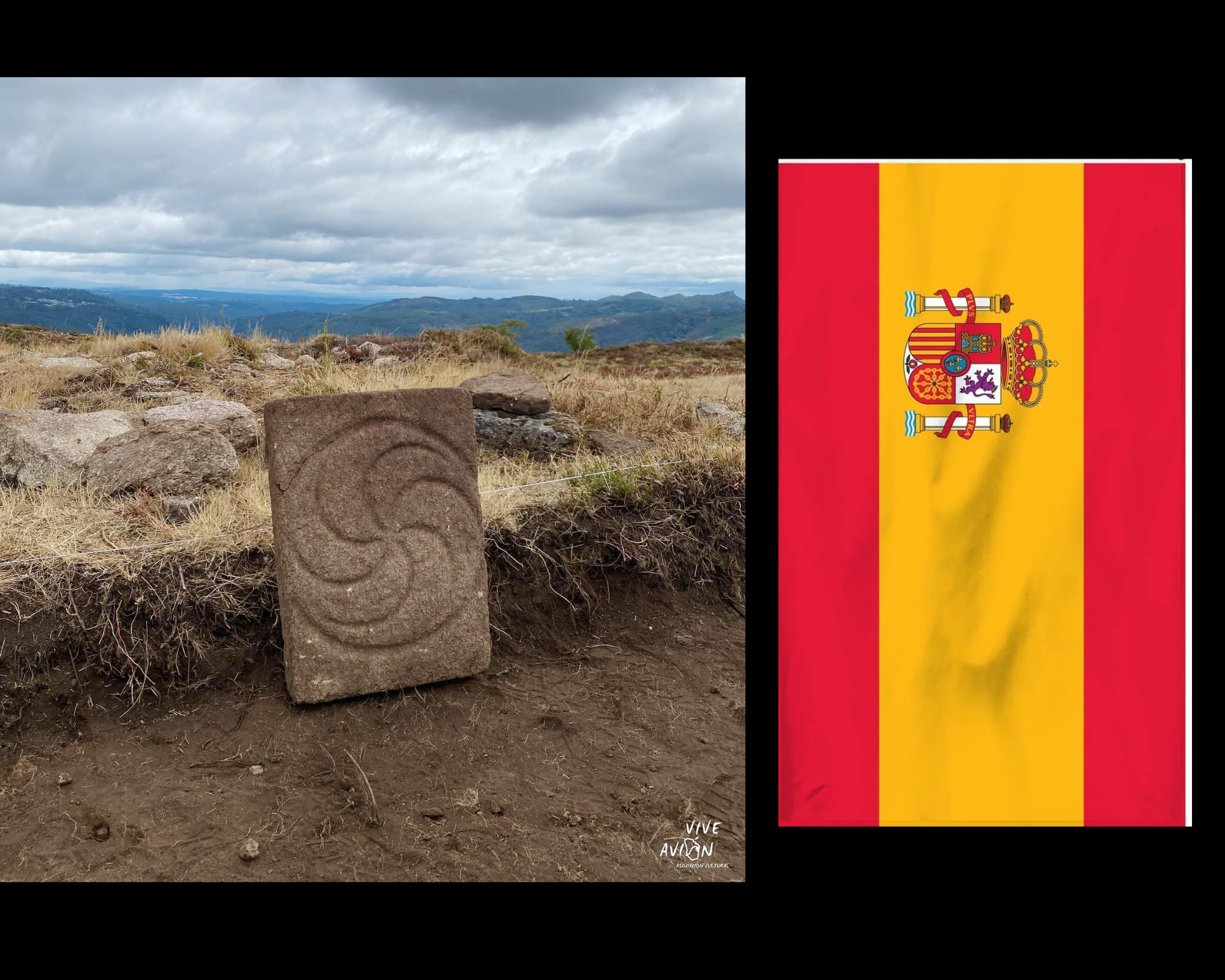
News of ancient Celtic symbols popping up in Spain might come as a surprise to those who think of the culture as being restricted to territories contiguous with Britain. But in ancient times, Celtic cultures could be found throughout western Europe, including the Spanish province of Ourense.
Another artifact of Celts’ presence there was recently uncovered by archaeologists who found a stone slab, nearly a foot thick and measuring five feet high and nearly four feet wide, with a triskelion engraved on its surface.
The triskelion is an ancient symbol made up of three spires emanating from a single point. A hallmark of Celtic visual culture, its name derives from a Greek term meaning “three times,” and it represents connection and infinity. In Celtic mythology, the number three has spiritual connotations, evoking the appropriate balance between Earth, heaven, and the land of the dead.
Photo: Vive Avión Cultural Association on Facebook.
This particular triskelion was found near San Vicenzo, a ruined fort long reclaimed by the hills surrounding Avión. Consisting of a defense wall, an upper terrace, and an interior enclosure, the fort is thought to have been built by the Castro culture, which populated the northwestern regions of the Iberian Peninsula from the late Bronze Age until the arrival of Roman legions during the 1st century B.C.E.
Known in Spain as the cultura castreña, or “culture of the hillforts,” they left behind numerous fortified townships, many of which, including San Vicenzo, have suffered from centuries of public neglect. Although San Vicenzo was first photographed in the 1950s, excavations did not begin until 2023.
Despite having been by that time a well-known target for treasure hunters for decades, the fort proved far from empty. Within a week of finding the triskelion, archaeologists also uncovered a stone slab featuring Celtic spirals arranged around the shape of a cross.
“This finding not only improves our understanding of the Iron Age in the region,” the archaeologists told the Spanish newspaper El Confidencial, “but also highlights the rich historical and cultural heritage that is still waiting to be discovered in the northwest of the Iberian Peninsula.”
Photo: Vive Avión Cultural Association on Facebook.
The Celtic culture is thought to have originated around 1,200 B.C.E. along the River Danube. They could once be found across western Europe, including in France and Spain, where they mingled with the Castros.
Due to their well-established mythological significance, the slabs found at San Vicenzo might have been used in—of all places—saunas. As archaeologist Nadya H. Prociuk explained in the article “Protection and Purity: Symbolic Functions of the Iron Age Saunas of the Iberian Northwest,” the Castro culture used saunas to clean themselves physically as well as spiritually.
They were, in Prociuk’s words, “liminal spaces to cleanse and prepare Castro people for the dangers that awaited them beyond the walls of their communities,” adding that they also “neutralized any potential spiritual contamination they may have acquired upon their return.”
While the precise use of the San Vicenzo slabs has yet to be thoroughly investigated, Vive Avión invites people to the fort to see the artifacts for themselves.